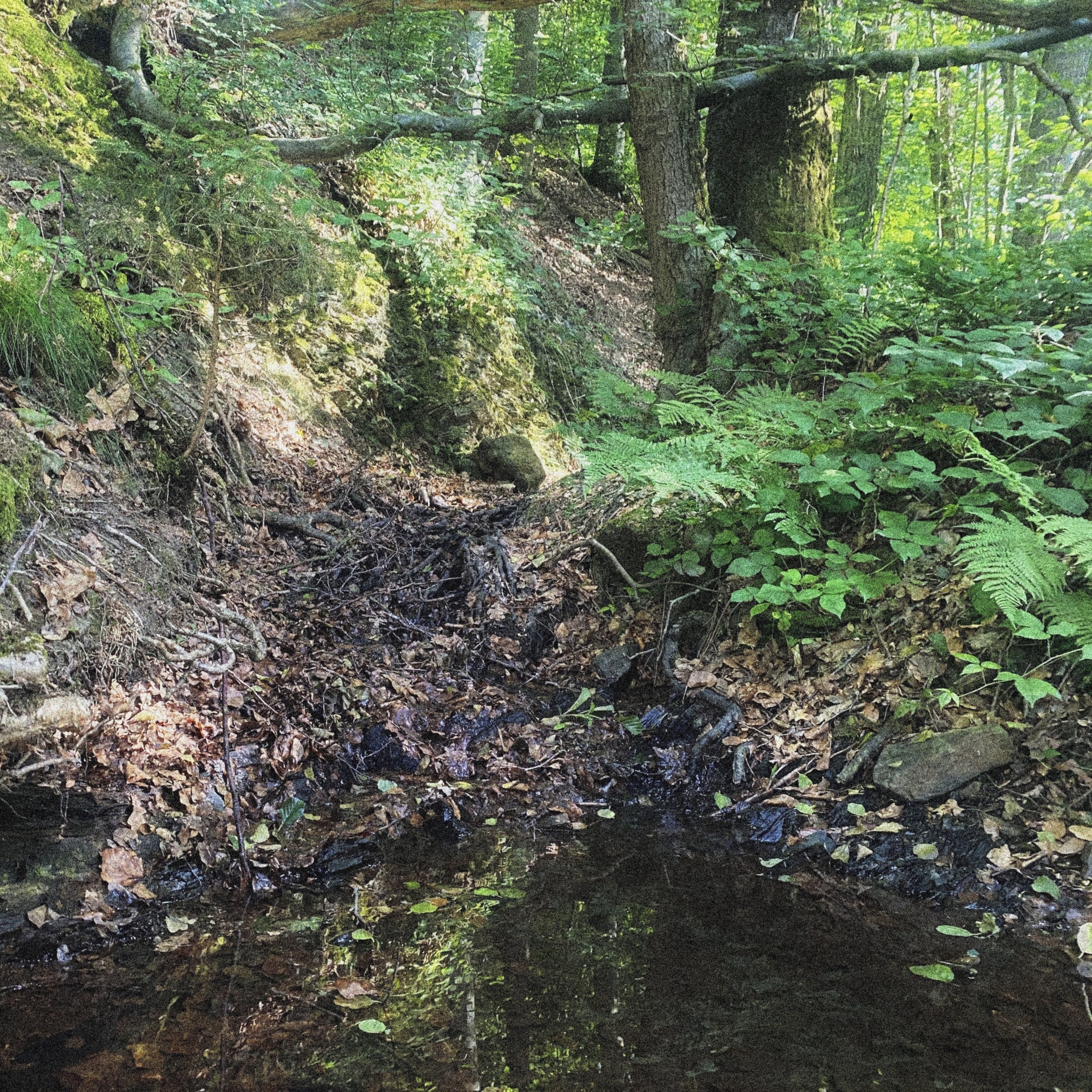Sem Zeeman
Ru du Pierreux [50.38536° N, 5.78953° O]
This piece is a field recording soundscape, recorded by a former vibrant flowing river, called Ru du Pierreux. The recordings are made in Rahier, Stoumont in Belgium. All sounds are recorded with two unidirectional condenser microphones in X/Y setup, geophone, hydrophone and ultrasonic receiver.
Ru du Pierreux used to be rich in life with trout swimming through the clear waters. The sounds of flowing water and splashing fish, which symbolized the vitality of the river, are now long gone. Today during summer, only a small water stream can be found.
The name Ru du Pierreux, which means “stone stream”, refers to the current dried-up riverbed where almost only stones, rocks, and organic material remain. The residents call the former river “the ugly street,” a sad contrast to its glorious past. The soft rippling sound of the remaining water symbolises the transience and change of this place. Higher temperatures and an irregular pattern of precipitation have led to frequent heat, drought and water scarcity.
Despite there is little water left, this place is rich in various old plant and tree species, represented by the soft rustling of leaves and the whisper of wind through the trees. Through the dense foliage only a few rays of sunlight reach the flora and fauna on the soil on summer days. The vegetation therefore offers a sheltered, moist, and warm place for the remaining life found there, which is well housed and fed by these factors. The old forest creates a mostly isolated place, where swarms of flies protecting the untouched surface and all kinds of birdsong marking the territory of this ecosystem. The diverse range of flora and fauna in this place has the realm to itself and is rarely disturbed by humanity, one of the few remaining places without air and noise pollution. Nature can therefore take its course undisturbed with pollination, spore formation and reproduction.
The trees act as resonance boxes where sap flows in the trunks and insect kingdoms in the hollows can be heard. The last bits of water is getting distributed among theirselves and absorpted by the roots in the former riverbed. The recordings trace the rich history and adaptability of nature, which make us aware of the vulnerability and strength of our ecosystems. The chirping and fluttering birds, crackling insects, rustling leaves, buzzing flies, and the echolocation of bats create a lively and complex auditory image of the life that, despite everything, continues to exist in Ru du Pierreux.
